Hello guys, Welcome to TigerJek, today we will see the best schools in Zagreb. When families explore Zagreb as a place to live or relocate, one of their first questions is: which school will give their child the best education and future prospects? Zagreb offers a spectrum of excellent schools: long-established public gymnasiums rich in tradition, highly selective STEM-focused institutions, and modern international schools aimed at globally mobile families.
Also Read: Best Schools in Nashville
The “best” school depends not only on academic ranking, but on curriculum, language, values, learning style and campus environment. We has gathered detailed data on six of the city’s top schools to help families make informed decisions.
For each school, we describes: history & mission; location & facilities; academic programmes; admissions & student profile; strengths & challenges; and practical tips.
Best Schools in Zagreb
1. American International School of Zagreb (AISZ)
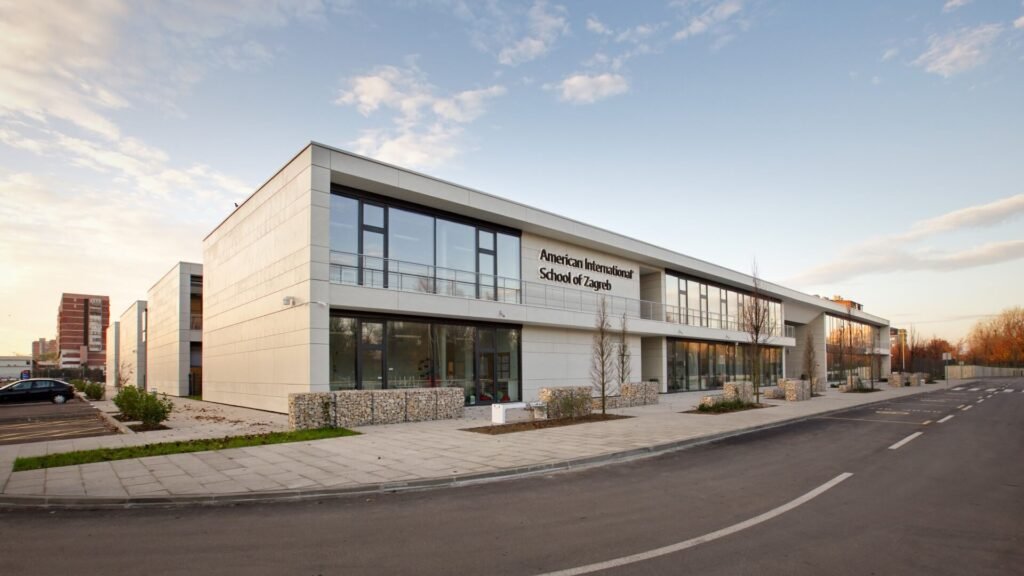
History & mission
Founded in 1966, has long served both the expatriate and local communities in Zagreb. Its mission stresses developing self-directed learners in an interconnected world, balancing excellence with inclusion. It prepares students for international university pathways.
The school occupies a ~30,000 m² campus in the Središće area (Bundek region). The campus is modern, energy efficient: one of its buildings is A+ rated, with high energy efficiency and low CO₂ emissions. Facilities include: two full libraries; three science laboratories; full-size gym; fitness rooms; dance studio; black box theater; art, music rooms; sports fields (football pitch, tennis courts, handball), adventure playgrounds etc.
Academic programmes
AISZ provides education from pre-kindergarten through grade 12. It is an IB World School authorized to offer the International Baccalaureate Diploma Programme in grades 11-12. Instruction is in English. For non-native English speakers there is support. Language offers include Croatian (mother tongue for locals), plus foreign languages (e.g. French, German). The curriculum emphasizes inquiry, international mindedness, arts, athletics, leadership.
Admissions & student profile
Students come from over 35–40 countries. Commonly families are expats, diplomats, business professionals, or Croatian families seeking international education. Admissions require prior school records; for higher grades, assessment of subject knowledge and English proficiency. There are one-time fees (e.g. admission, capital) plus annual tuition.
Strengths
- Strong international curriculum (IB Diploma), recognised globally.
- Modern, well-equipped campus with comprehensive facilities.
- Small class sizes, supportive environment.
- Good balance of academic rigor and co-curricular activities (sports, arts, trips).
- Energy efficient campus and emphasis on sustainability.
Challenges
- Fees are high compared to public schools.
- For local Croatian students or families expecting Croatian curriculum or instruction, the English-medium international model may differ in requirements and recognition.
- Places may be limited in certain grades.
Tip
Families interested in AISZ should obtain recent IB Diploma results (scores, number of diplomas), and university destination data. Also visit the campus in person to see how the support systems for non‐English speakers function, and explore after school and leadership opportunities.
2. British International School of Zagreb (BISZ)
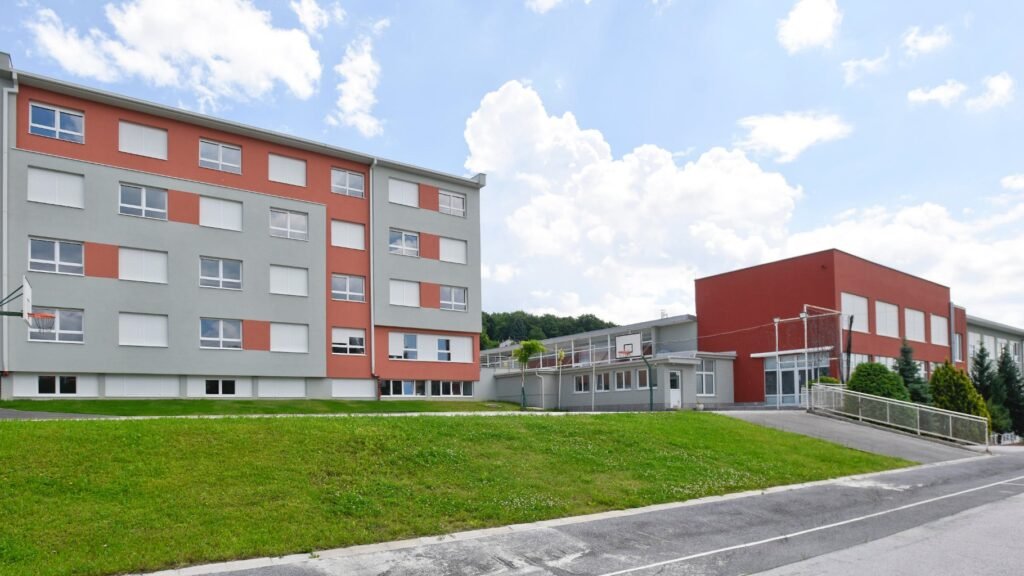
History & mission
BISZ is comparatively recent. It opened in 2013, but builds on a longer tradition via its link with the “Kreativan razvoj” primary school which has operated since 1995. The school’s goal is to offer British curriculum (Key Stages, IGCSE, A-Levels) in an international setting, with emphasis on English instruction, international mindedness, and preparing students for global education and universities.
Location & facilities
The school is located fairly close to Zagreb centre (≈ 5 km), in a modern campus with ~9,000 m² of indoor space and about 25,000 m² outdoor grounds. It includes facilities such as sports courts, swimming pool, laboratories, ICT rooms, boarding house for older students (13-18 years) with high-standard rooms with en-suite bathrooms, lounges, study rooms etc.
Academic programmes
- Early Years & Primary: British National Curriculum plus International Primary Curriculum (IPC) with inquiry-based, cross-disciplinary units. Electives include Modern Foreign Languages, art, music etc.
- Secondary / Middle Years: IGCSE in Years 10-11.
- Upper Years (Years 12-13): AS / A-Levels, which map well to university admission internationally.
Admissions & student profile
Students are international, from many nationalities, and also Croatian students seeking an English-based education. Classroom sizes are modest, allowing more personalized attention. Admission includes interview, evaluation of prior records, English proficiency. Boarding is available for those who need it.
Fees
Tuition is substantial. For academic year 2024-25:
- Preschool / Nursery & Reception: ~ €7,250
- Primary (Years 1-6): ~ €14,500
- Middle Years (Years 7-9): ~ €16,000
- Secondary (Years 10-13): ~ €17,500
- Boarding option (full boarding) significantly adds to cost.
Strengths
- Thorough British curriculum with internationally recognized credentials.
- Excellent facilities.
- Boarding option is rare among Zagreb schools.
- Strong focus on extracurriculars, sport, arts, languages.
- International community.
Challenges
- Cost is high; before enrolling, families should budget not only tuition but boarding, materials etc.
- For students whose first language isn’t English, strong support is needed.
- IGCSE/A-Level path is rigorous; students need strong motivation and readiness.
Tip
Visit the school during a regular lesson day; request examples of student work in IGCSE/A-Levels; ask for university admission stats. Also check how flexible subject choices are (i.e. whether all desired subjects are offered in A-Levels) and whether boarding students are well supported socially.
3. XV. gimnazija – MIOC (Mathematics and Computer Science High School)
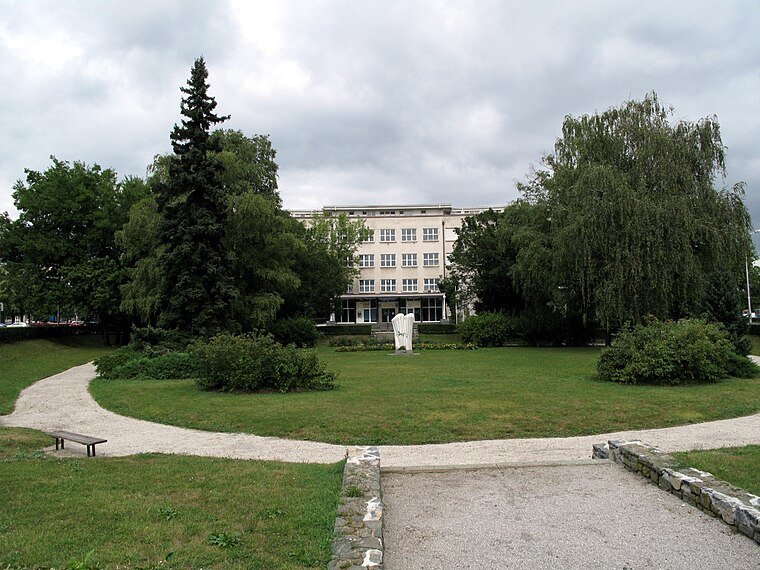
History & mission
Commonly known as “MIOC” (Matematičko informatički obrazovni centar), XV. gimnazija is a public high school founded in 1964. It has a reputation as Croatia’s leading STEM-oriented gymnasium. Its mission is to educate students with strong mathematical, computer science, and science background, often preparing them for technical, scientific, engineering, or informatics university programmes.
Location & facilities
Located in central Zagreb, address Jordanovac 8. As a public gymnasium, its facilities are more modest compared with fully resourced private or international schools, but are geared to support advanced STEM learning: well-equipped math and informatics labs; computer labs; science labs; and motivated faculty. Class sizes can be larger, but there is a strong culture of peer learning, competition, and extracurricular STEM activities.
Academic programmes
- Curriculum follows Croatian national standards for gymnasiums, with special orientation towards mathematics and computer science.
- Students choose tracks or streams: e.g. the “B programme” ((math/informatics intensive) vs general or other tracks.
- Emphasis on national and international competitions, Olympiads in math, informatics etc.
- Strong outcomes historically in university placements particularly into STEM fields.
Admissions & student profile
Entry is competitive. Students often need high grades in primary school, sometimes entrance or aptitude tests. Student body is academically motivated, many work outside classroom on competitions. Language of instruction is Croatian. Students usually fluent in mathematics, logical thinking. For non-Croatian speakers, might be harder to integrate.
Strengths
- Top STEM school in Zagreb; excellent results in competitions.
- Prestigious reputation which helps university entrance in STEM fields.
- Peer group is high-achieving, pushing each other.
- Faculty experienced in advanced STEM subjects.
Challenges
- Very rigorous and intense: not all students thrive under high pressure.
- Less focus on languages or arts relative to international schools.
- For families expecting English or bilingual instruction, there may be fewer options.
Tip
If considering MIOC, visit during a math / programming class, ask about support for weaker subjects, how students manage workload. Also see whether the school offers support or extra coaching for national/international Olympiads.
4. Classical Gymnasium in Zagreb (Klasična gimnazija)
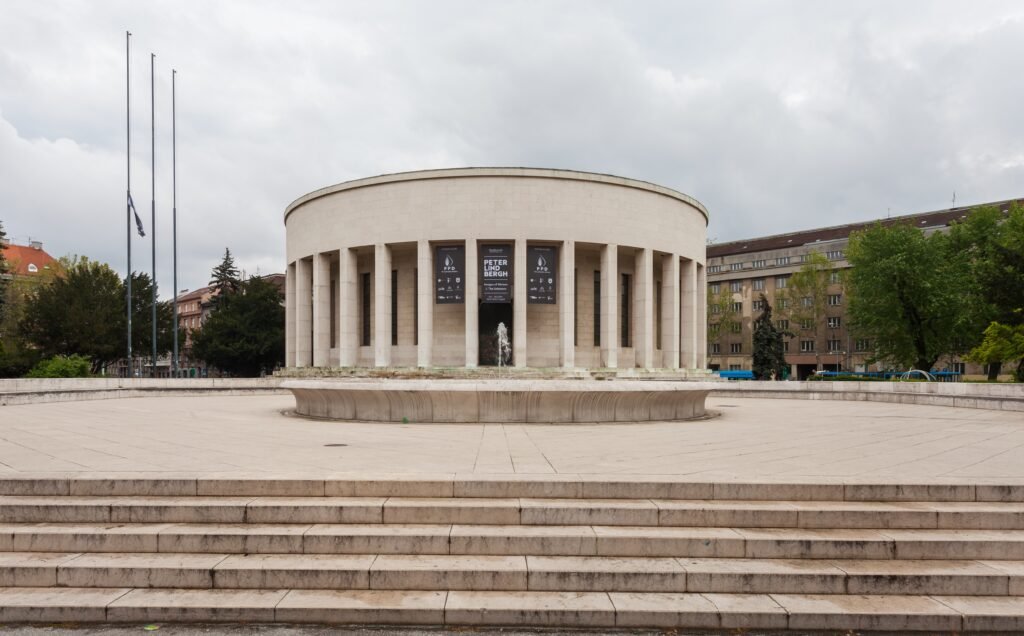
History & mission
One of the oldest schools in Zagreb and indeed the region. Established in 1607 by the Jesuits, operated based on the “Ratio atque institutio studiorum societatis Jesu”. Over centuries it evolved, survived various political regimes, preserved its classical orientation: Latin and Ancient Greek taught, strong humanities formation. Mission is to develop deep critical thinking, language skills, cultural literacy and a sense of history and tradition.
Location & facilities
Located at Križanićeva Street 4A, in the Donji grad (Lower Town), in Zagreb. Because of its historical nature, the building is older, cultural heritage protected. That means architectural charm, but also certain constraints. Classrooms for classical subjects, spaces for drama, library, choir, etc. Some modernization over time (e.g., technology in some classrooms), though large investment in facilities may lag compared with newer schools.
Academic programmes
- Four-year secondary education (grades ~9-12) following Croatian gymnasium curriculum.
- All students study classical subjects: compulsory Latin and Ancient Greek. Also modern languages, literature, philosophy, history.
- Electives and extracurriculars include drama, public speaking, choir, arts, educational travel. Alternate Saturday additional classes.
Admissions & student profile
Attracts students with interest in humanities, languages, culture, history. Students are usually academically strong or show aptitude for languages. Admission via standard processes; grades from primary school matter. Language of instruction is Croatian. Students often comfortable in textual and interpretive disciplines.
Strengths
- Uncommon curriculum in Europe: having Ancient Greek + Latin gives depth in languages and thinking.
- Strong cultural tradition, long history, prestige.
- Good for students drawn to humanities, law, arts, philosophy.
- Rich extracurriculars in theater, drama, public speaking.
Challenges
- Less emphasis on STEM advanced courses compared to MIOC or international options.
- Facilities may be limited by preservation constraints or historic building structure.
- For families expecting English instruction, adaptation needed.
Tip
If your child loves languages, literature, philosophy, ask to see recent student projects (drama, ancient plays, public speaking). Also check how modern the technology integration is (digital humanities, modern language labs, etc.).
5. Tituš Brezovački Gymnasium (“Gimnazija Tituš Brezovački”)
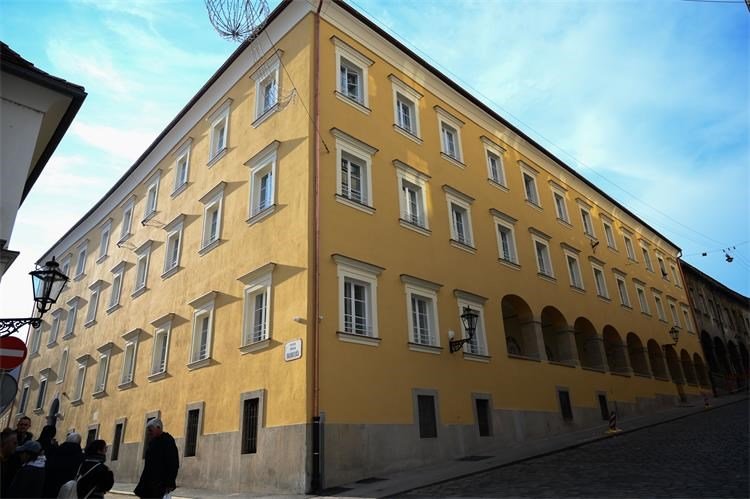
History & mission
Gimnazija Tituš Brezovački is one of Zagreb’s respected public gymnasiums. The name comes from Tituš Brezovački, an important figure in Croatian literature in the 18th century. The school has served many students over decades. Its mission is to deliver a balanced, rigorous secondary education that allows students to succeed in national exams, enter university, and develop civic and cultural awareness.
Location & facilities
Located in Gornji grad (Upper Town) in central Zagreb, in a building of cultural importance. The school building was damaged in earlier earthquakes, underwent restoration / renovation / rebuild efforts; by autumn 2025 (or relevant school year) the rebuilt or refurbished building is expected to be re-occupied by students. Facilities include classrooms, science labs, and spaces for extracurriculars, though constrained in size given central urban location.
Academic programmes
The school operates the standard Croatian gymnasium programme: general gymnasium, with optional tracks; students study across natural sciences, humanities, languages. Emphasis on preparing for the “državna matura” (state matriculation exam) and university entrance. Outside the core curriculum, there are elective subjects, extracurriculars, arts, and sports. The school also runs international cooperation projects, cultural exchanges etc.
Admissions & student profile
A public school: no tuition fees. Admission based on primary school performance. Students are local, but many come from across the city for its reputation. Because of renovation, the school was displaced for a time, which affected logistics. Enrollment around ~430 students in recent years; teachers and administration are experienced and engaged.
Strengths
- Strong local reputation, sense of tradition.
- Centrally located in Zagreb, good for local commuting.
- Motivated students, active in extracurriculars and competitions.
- No tuition fees (being public).
Challenges
- Facilities disrupted by build-restoration cycles (earthquake damage, heritage protections).
- Space constraints. With students from other displaced schools or overlapping classes (if sharing buildings), timetable or space pressure can increase.
- Less international or English-medium options; more focus on Croatian curriculum.
Tip
Check current status of restoration; visit the school to see classroom conditions. Ask how stable the location and infrastructure are. Also ask about student support during disruptions. Review last few years’ “državna matura” results; talk to current students about how the school handles overflows or shared space when needed.
6. I. gimnazija (First Gymnasium / Prva gimnazija)
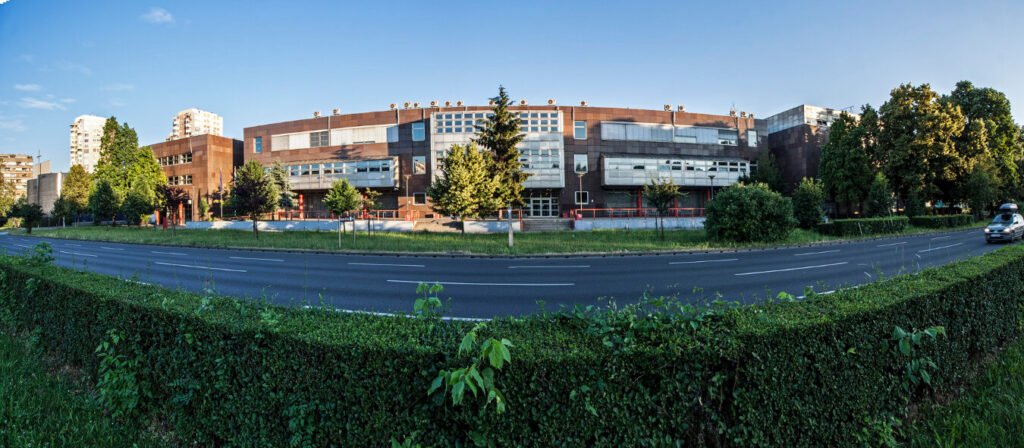
History & mission
I. gimnazija (Prva gimnazija) is among Croatia’s oldest secular gymnasiums. Founded 1854. Over time it has developed into a school known for good academic results, broad curriculum, and preparing students well for university. Its mission includes offering both general and natural science-mathematics tracks, encouraging extracurriculars, fostering a well-rounded education.
Location & facilities
Address: Avenija Dubrovnik 36, Zagreb. The school functions only in morning shift (which many students and families see positively). It has ~21 classes (for the 2025/26 school year: ~6 first grade classes, 5 each of second, third, fourth grade varying). Facilities have been modernized: all classrooms have at least a laptop, projector, air-conditioning; specialized classrooms for sciences; lab and project-based work; good technological integration.
Also offers many extracurricular activities: debating, clubs (art, literature, science), volunteering, sports etc. The school has a leafy reputation, strong student community.
Academic programmes
- Two tracks: general gymnasium and natural science-mathematics (prirodoslovno-matematička) programme.
- Regular classes, but also elective/optional (izborne), facultative (fakultativne) classes.
- Field trips, projects, external competitions are part of curriculum.
- Strong performance in national exams; many students enter their first choice of university.
Admissions & student profile
Public school, no tuition. Students are selected based on primary school performance; the best students tend to apply. The student body is academically capable; many engaged outside the classroom in competitions, arts, volunteering. School has ~570 students, ~50‐ish teachers + support staff.
Strengths
- Prestigious, historical, very good academic outcomes.
- Balanced: strong in sciences and humanities, variety of electives and extracurriculars.
- Morning-only schedule means less logistical burden for students.
- Good modernization of classrooms.
Challenges
- Because of popularity, competition to get in is stiff.
- As a public gymnasium, budgets may be more limited than private or international schools.
- For students wanting full English-medium or IB / Cambridge qualification, this school uses Croatian national curriculum.
Tip
If considering I. gimnazija, families should check recent results on the state matriculation exam, look at how the science track operates in practice (lab access, teacher qualification). Also ask about how elective and project-based options are offered and whether student voice influences school decisions.
Practical advice for families
- Visit schools in person: Walking through classrooms, seeing teacher-student interactions, observing facilities tells more than brochures.
- Check recent exam results and university placements: Ask schools for state matriculation scores, IB or A-Level diploma pass rates, and what universities students go to.
- Understand admissions timelines: Public gymnasiums have certain windows, may require entrance tests or high primary school grades. International schools have deadlines, assessments, sometimes waiting lists.
- Consider logistics: travel time, morning vs afternoon shifts (some schools have shifts), building condition especially after earthquake damage/restoration, boarding, safety.
- Support for non-native speakers: If family language isn’t Croatian, check how much support exists for language learning and integration.
- Extracurricular alignment: If child has passion (STEM, arts, languages, sports), pick schools that offer that.
Why these six stand out
We picked these six schools because between them they represent the best options in Zagreb across different criteria: international credentials, STEM focus, strong humanities tradition, public vs private, historic prestige, and modern facilities. They cover different needs and budgets.
- Top international curricula: AISZ (IB), BISZ (UK / Cambridge)
- STEM excellence: XV. gimnazija / MIOC
- Humanities & languages: Classical Gymnasium
- Strong public tradition and balance: Tituš Brezovački, I. gimnazija
FAQ
Is it possible to switch from a Croatian gymnasium to an international school (or vice versa)?
Yes, but timing and curriculum differences matter. International schools may require English proficiency and course mapping; Croatian gymnasiums emphasize national curriculum and Croatian language. Transfer often easier in earlier grades, harder in upper years.
How do international school fees compare?
AISZ and BISZ have among the highest fees in Zagreb. For example, BISZ’s fees for secondary (Years 10–13) are around €17,500 per year. AISZ’s fees similarly high, plus admission, capital fees etc. Public schools are free but may have costs for materials and extra-curriculars.
Are there boarding options?
Yes — BISZ offers boarding for ages ~13-18. AISZ does not appear to have full boarding; it’s day school. Public schools don’t generally provide boarding.
What about school culture / class size / student well-being?
International schools generally have smaller class sizes, more resources for counseling, pastoral care, and often more flexibility in curricular and extracurricular activity. Public gymnasiums are more rigid in schedule, heavier workloads, particularly in STEM-focused or competition-oriented schools.
Conclusion
Conclusion is that there is no one “best” school for everyone in Zagreb — but among these six, almost any student should find a school that fits their academic profile, learning style, language needs and future goals:
- If a family wants international recognition and English-medium education, with global university options, AISZ or BISZ are top choices.
- If a student is strong in STEM and enjoys challenge, XV. gimnazija (MIOC) is hard to beat locally.
- If a student is drawn to languages, culture, history, philosophy, and wants a classical, tradition-rich education, Classical Gymnasium is outstanding.
- For families who want excellent public education, minimal costs, strong prestige, and balanced opportunities, I. gimnazija or Gimnazija Tituš Brezovački are excellent.
We recommends that families shortlist 2-3 of the above schools, visit them, compare actual recent outcomes, and pick the one that aligns not just with academic prestige, but with the child’s interests, support needs and what will make them thrive.

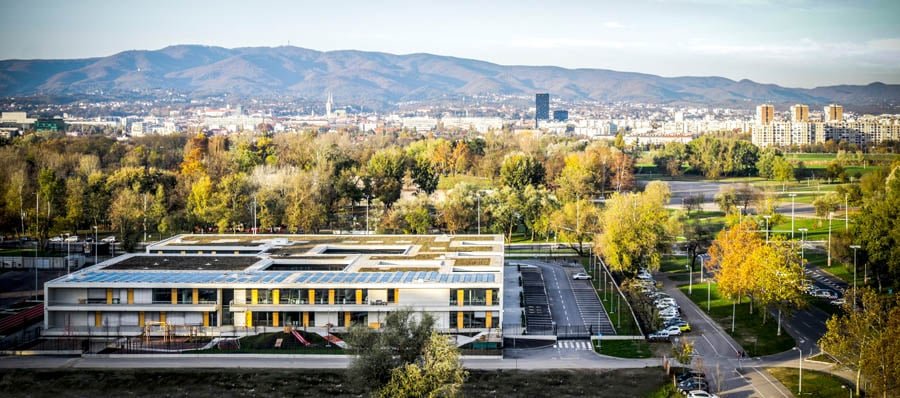
1 thought on “Best Schools in Zagreb (2025)”